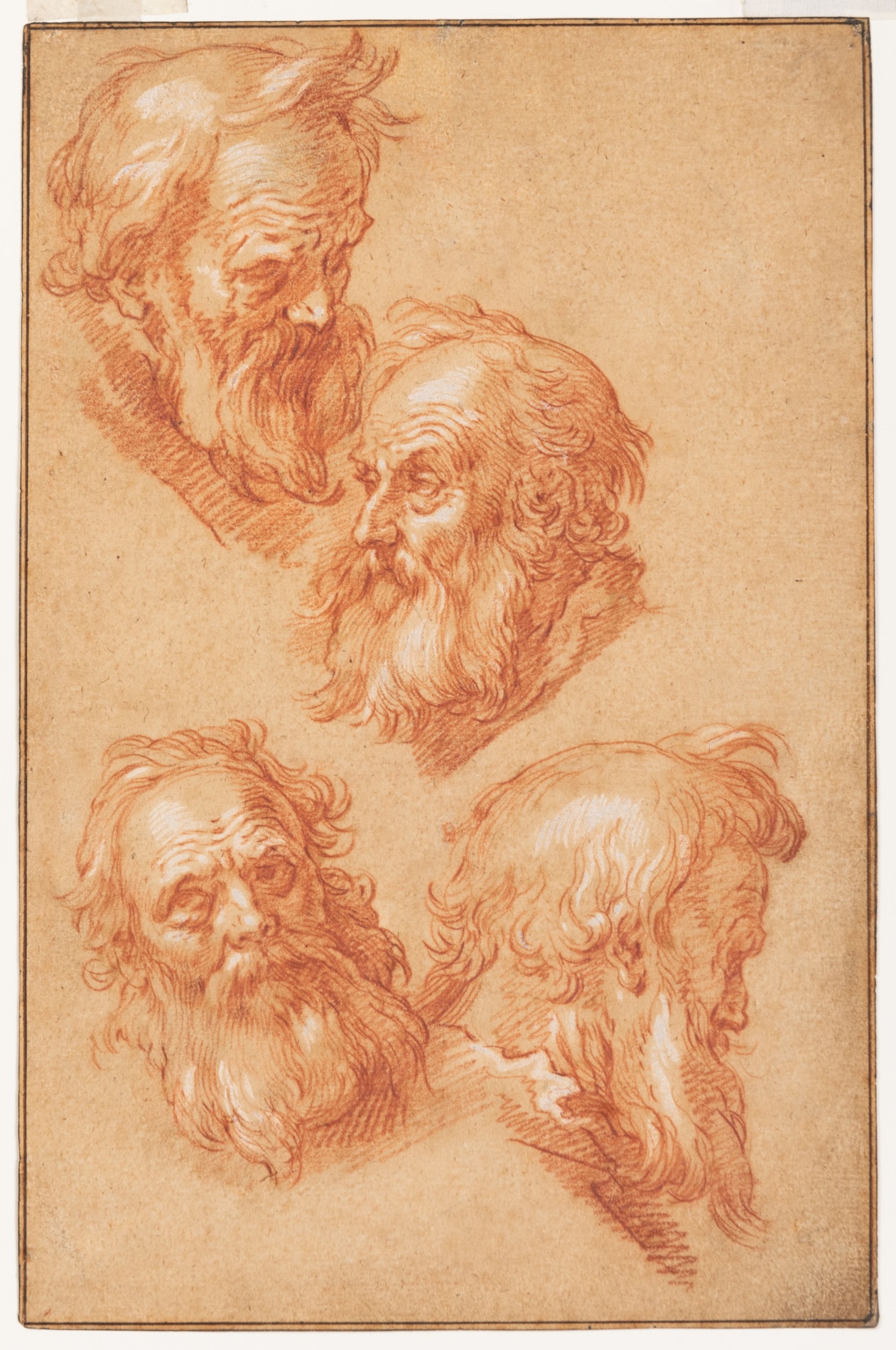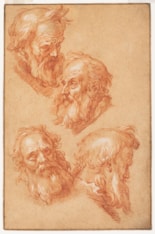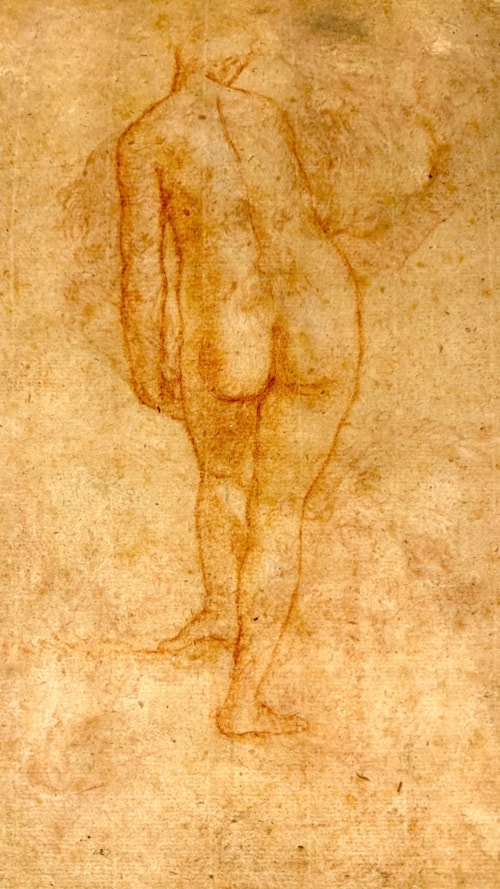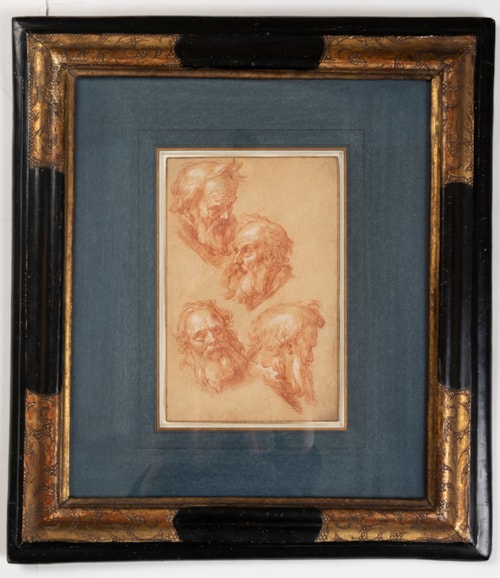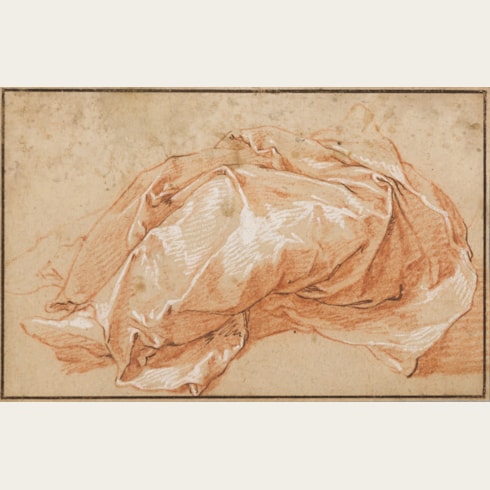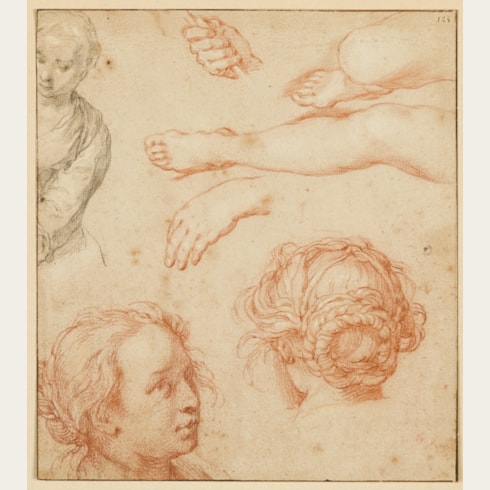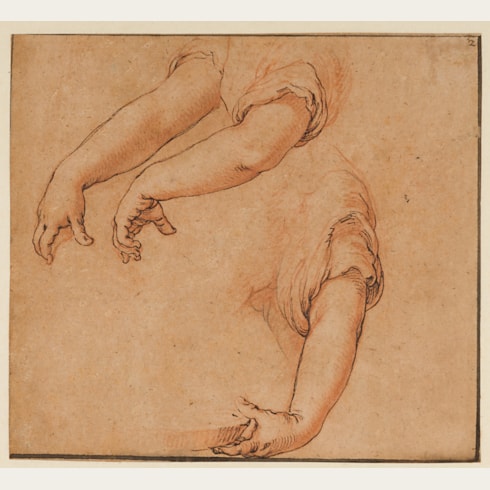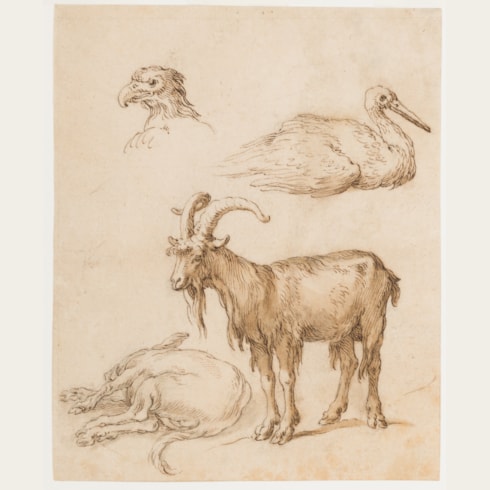Abraham BLOEMAERT
(Gorinchem 1564 - Utrecht 1651)
Four Studies of the Head of an Old Man
A study of a female nude seen from behind drawn in red chalk on the verso.
285 x 187 mm. (11 1/4 x 7 3/8 in.)
This unpublished sheet of studies by Bloemaert contains four studies of an old bearded man of a distinctive type and physiognomy that is found in many of the artist’s religious paintings. Although none of the four heads in this drawing can be identified as exact preparatory studies for specific figures in paintings, very similar heads occur in such works of the 1620s and 1630s. The head at the upper left of the sheet, for example, is close to one in an Adoration of the Shepherds of 1623 in the Sint Jakobskerk in The Hague, while the head at the lower left is similar to that of Saint Joseph in an altarpiece of The Adoration of the Magi of 1623-1624, today in the Musée de Grenoble. Similarly, the centrally placed head in this drawing is akin to that of the saint in an easel painting of Saint Paul at Prayer of 1631, in the collection of the Centraal Museum in Utrecht.
The red chalk study of a posed female nude on the verso of this sheet is a rarity among Bloemaert’s drawings, as most of the artist’s relatively few studies of female nudes are drawn in pen and ink. Similar female nudes seen from the back occur in a handful of works by Bloemaert, such as a painting of The Judgement of Paris of c.1592 in a private collection and The Flood of c.1590-1595 in the Yale University Art Gallery in New Haven, or a circular drawing of Lot and his Daughters of c.1600-1605 in a private collection.
Unlike the vast majority of Bloemaert’s sheets of studies in red chalk, this drawing does not seem to have been part of the large group of around 140 drawings by the artist that were at one time in the collection of the French landscape painter André Giroux (1801-1879), and which were dispersed at auction in Paris in 1904. The ex-Giroux drawings are numbered on the upper right corner of the sheet, up to 162, which suggests that they may have formed part of an album. The present sheet does not bear a number and thus is unlikely to have come from the Giroux album.
Bloemaert was a gifted and prolific draughtsman, praised as such by his biographer Karel van Mander, who noted that the artist ‘has a clever way of drawing with a pen, and, by adding small amounts of watercolour, he produces unusual effects’. He produced numerous studies for paintings and engravings - some six hundred prints after his designs are known - as well as several landscape drawings and many sheets of studies of heads, hands and arms. Some of the latter were reproduced as engravings by his son Frederik and published in the 1650s as the Konstryk Tekenboek, a sort of model-book for students. The Tekenboek proved very popular and was reprinted several times, serving to perpetuate Bloemaert’s influence on later generations of artists. (Indeed, the 18th century French artist François Boucher published a series of etchings after Bloemaert’s figure studies, known as the Livre d’etude d’après les desseins originaux de Blomart, which appeared in Paris in 1735.) The bulk of Bloemaert’s enormous corpus of drawings, numbering around 1,700 sheets, appear to have been retained by his descendants for over fifty years, and it is not until the first half of the 18th century that they began to be sold and dispersed.
Provenance
The De Waldner de Freundstein family, and by descent to Isabelle de Waldner de Freundstein
Thence by descent.

